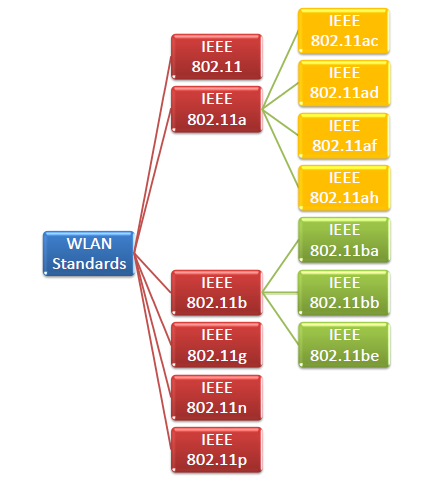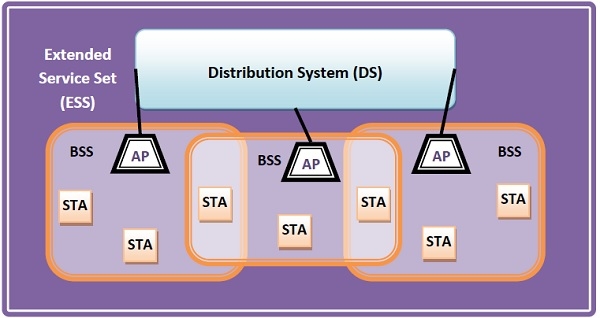Wi-Fi, also known as wireless fidelity, has become an integral part of our everyday lives. It enables us to connect our devices to the internet and other services without the need for physical wired connections. But have you ever wondered how Wi-Fi works and what the standards behind it are? In this article, we will explore the IEEE 802.11 wireless LAN standards that define the architecture and specifications of Wi-Fi networks.
The Evolution of IEEE 802.11 Standards
The IEEE 802.11 standards have evolved over the years to keep up with the increasing demand for more data and higher speeds. Let’s take a look at the different versions of the IEEE 802.11 standards and their key features.

IEEE 802.11a: Enhanced Performance in the 5 GHz Band
IEEE 802.11a was introduced as an enhancement to the original 802.11 standard. It operated in the less crowded 5 GHz band and used orthogonal frequency division multiplexing (OFDM) for better performance. IEEE 802.11a provided a maximum data rate of 54 Mbps and offered error correcting code. The 5 GHz band gave 802.11a an advantage over 802.11b in terms of reduced interference.
IEEE 802.11b: The Beginning of Wi-Fi
The first widely adopted version of the IEEE 802.11 standard was IEEE 802.11b. It was released in the early 2000s and used direct-sequence spread spectrum (DSSS) modulation in the 2.4 GHz band. IEEE 802.11b offered a higher data rate of 11 Mbps compared to the original 802.11 standard. However, due to the crowded nature of the 2.4 GHz band, devices using 802.11b often faced interference from other devices.
IEEE 802.11g: Backward Compatibility and Improved Throughput
In 2003, IEEE 802.11g was introduced, combining the best of both worlds from 802.11a and 802.11b. It operated in the 2.4 GHz band like 802.11b and used OFDM modulation like 802.11a. IEEE 802.11g provided an average throughput of 22 Mbps and was fully backward compatible with 802.11b devices. However, it still faced interference from other devices operating in the 2.4 GHz band.
IEEE 802.11n: The Era of High-Speed Wi-Fi
IEEE 802.11n, approved and published in 2009, marked a significant improvement over previous standards. It operated on both the 2.4 GHz and 5 GHz bands and introduced multiple-input multiple-output (MIMO) technology. IEEE 802.11n offered variable data rates ranging from 54 Mbps to 600 Mbps, depending on the number of antennas used. This standard revolutionized Wi-Fi by providing faster and more reliable connections.
IEEE 802.11ac: Gigabit Wi-Fi
With the increasing demand for higher speeds, IEEE 802.11ac, introduced in 2013, brought Gigabit Wi-Fi to the table. It operated exclusively in the 5 GHz band and utilized wider channel bandwidths, up to 160 MHz. IEEE 802.11ac offered data rates exceeding 1 Gbps, making it ideal for bandwidth-intensive applications like video streaming and online gaming.
IEEE 802.11ax: Wi-Fi for the Future
The latest addition to the IEEE 802.11 family is IEEE 802.11ax, also known as Wi-Fi 6. It aims to address the challenges of high-density and congested environments. IEEE 802.11ax introduces several new technologies, including orthogonal frequency division multiple access (OFDMA) and target wake time (TWT). These advancements enable higher efficiency, lower latency, and improved performance in crowded networks.
The Components of IEEE 802.11 Architecture
To better understand how Wi-Fi networks function, let’s delve into the components of the IEEE 802.11 architecture.

Stations (STA)
Stations refer to all the devices connected to a wireless LAN, including computers, laptops, smartphones, printers, and more. Each station has a wireless network interface controller that enables communication with other devices in the network.
Wireless Access Point (WAP)
Wireless Access Points (WAPs) serve as base stations or access points for the wireless LAN. They are typically wireless routers that connect the devices within the network to other networks or the internet.
Basic Service Set (BSS)
A Basic Service Set (BSS) is a group of stations that communicate at the physical layer level. There are two types of BSS:
- Infrastructure BSS: In this mode, devices communicate with each other through access points.
- Independent BSS: Here, devices communicate in a peer-to-peer manner, forming an ad hoc network.
Extended Service Set (ESS)
An Extended Service Set (ESS) is a set of interconnected Basic Service Sets (BSS) within a wireless LAN. It allows devices connected to different BSSs to communicate with each other.
Distribution System (DS)
The Distribution System (DS) connects multiple access points within an Extended Service Set (ESS). It enables seamless roaming and communication between devices connected to different access points.
Conclusion
Wi-Fi, based on the IEEE 802.11 standards, has revolutionized the way we connect and communicate. From the early days of 802.11b to the latest advancements in 802.11ax, Wi-Fi has continuously evolved to meet the growing demand for faster, more reliable, and secure wireless connections. Understanding the different IEEE 802.11 standards and the components of the Wi-Fi architecture provides a solid foundation for exploring the possibilities and applications of this transformative technology.
